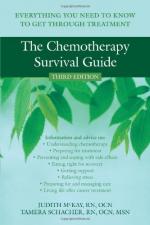|
This section contains 3,062 words (approx. 11 pages at 300 words per page) |

|
For the most part, chemotherapy has always aimed to kill diseased cells. From traditional chemical poisons to more recent molecular-level treatments, the cancer cell itself had always been the target. In the 1960s, however, some scientists decided to take a revolutionary approach to chemotherapy. They no longer limited chemotherapy to agents that could act specifically against the cancer cell. Instead, they believed that any tactic that could keep cancer from killing its victim should be explored as thoroughly as methods that directly targeted tumors. The result of this new way of thinking was the development of a new class of drugs. These drugs, called angiogenesis inhibitors, attacked and killed normal cells to starve out cancerous ones.
The Problem with Blood
As with other advances in chemotherapy, the development of angiogenesis inhibitors was the outgrowth of work initially unrelated to cancer research. In 1961 the navy...
|
This section contains 3,062 words (approx. 11 pages at 300 words per page) |

|




